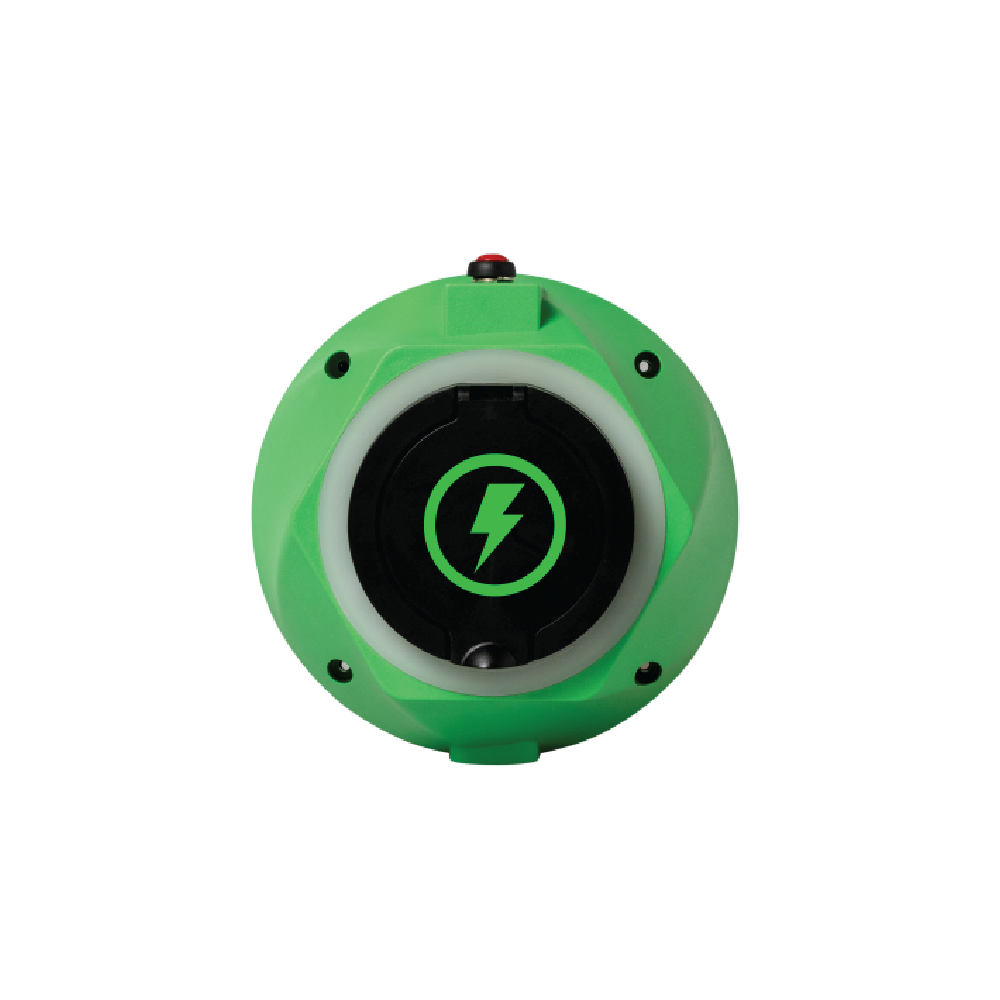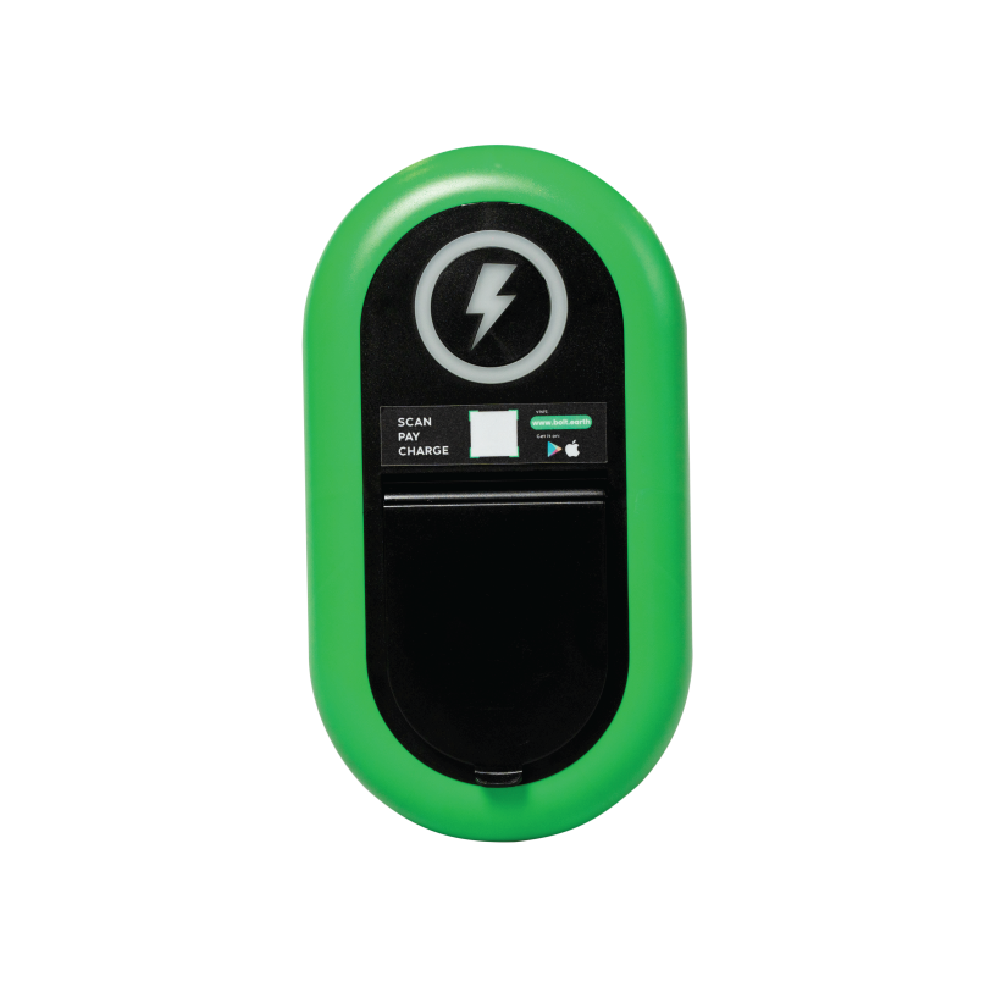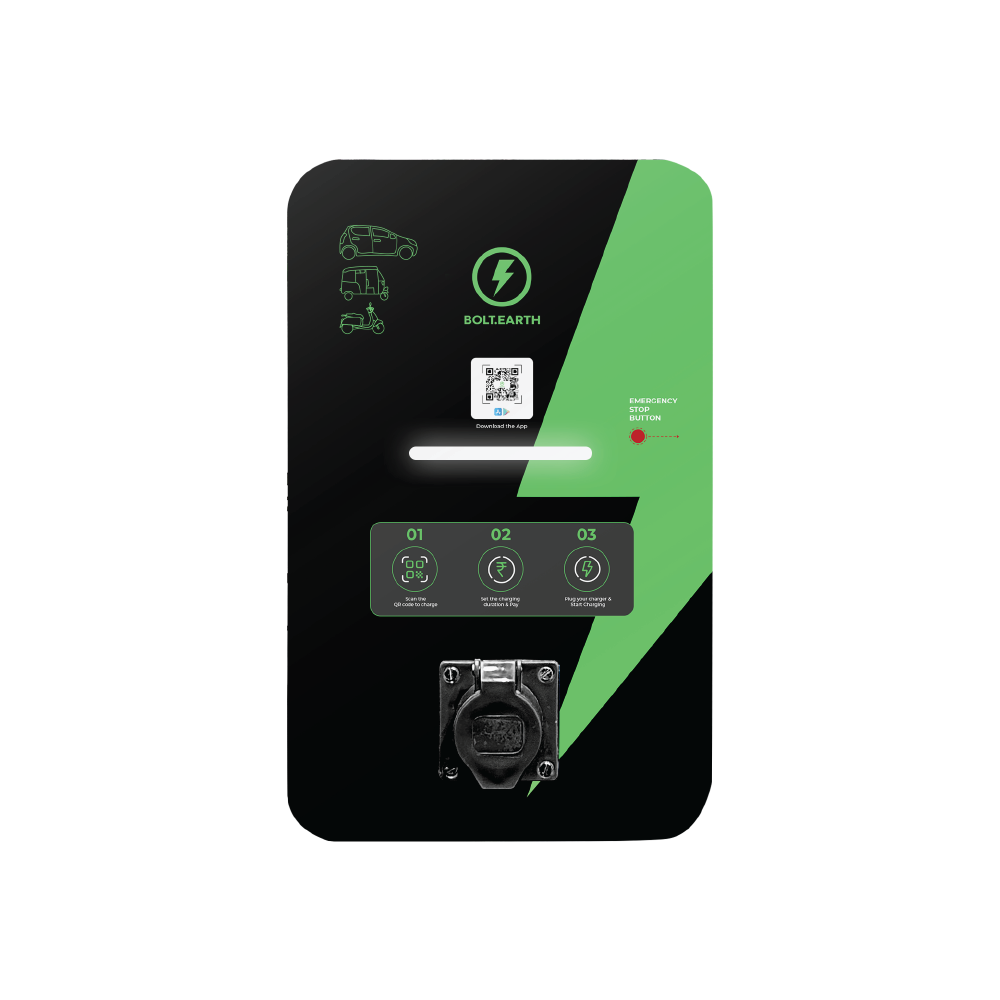The Power of Dynamic Electric Vehicle Operating System Integration
Raghav Bharadwaj
Chief Executive Officer
Published on:
27 Oct, 2023
Updated on:
06 Oct, 2025

Electric vehicles (EVs) represent a technological revolution with the potential to transform transportation. Central to this revolution are EV operating systems (OS), the digital intelligence behind the wheels driving the future of mobility. In recent years, these operating systems have rapidly advanced to dynamically integrate with hardware and software components, making EVs smarter, safer, and more efficient. As these OS continue to develop their integration capabilities, they hold the potential to reshape mobility in India and worldwide. However, several challenges must be addressed to realize this potential fully.
In light of the growing importance of dynamic OS integration, this article will answer three questions:
- Why is dynamic OS integration crucial in revolutionizing the next generation of EVs?
- What challenges and obstacles affect the integration of OS in EV technology?
- How do innovative solutions and advancements in OS impact the future of EVs?
Current Landscape of EVs and OS Integration
The OS is the core of any EV, facilitating seamless communication among the vehicle’s components, managing energy usage and distribution, and providing an interface for drivers to interact with the vehicle’s components. As the focus shifts to OS in this age of software-defined vehicles (SDVs), numerous players are entering the scene. The Foxconn-led Mobility in Harmony (MIH) consortium selected Blackberry’s QNX OS to power its EVs in Asia. Additionally, Android Auto introduced many features, allowing drivers to select their EV charging connector type, displaying real-time battery charge, and integrating with Google Maps.
Despite these advancements, many limitations in EV OS need to be addressed to maximize the benefits of technological innovation. These limitations include slow real-time responsiveness, limited customization and compatibility options, potential cybersecurity issues, and restricted integration with third-party apps. This gap between the current state of EV OS and what is required underscores the importance of focusing on dynamic OS integration.
Significance of Dynamic OS Integration in EVs
The race to build next-generation EVs is intensifying, as almost every auto manufacturer strives to make EVs smarter and more energy-efficient with each new model. GM’s Ultium architecture and Mercedes’ MMA platform are introducing new features and enhancing efficiency through their OS. However, to captivate the interest of EV buyers, these next-generation vehicles must offer seamless, intelligent, and personalized experiences.
Dynamic OS integration can deliver these experiences, making it highly relevant for future EV models. However, several challenges must be addressed to fully harness the power of this dynamic integration for EV drivers.
Addressing Challenges in OS Integration
To meet the growing demand for smarter and more efficient EVs, it’s essential to acknowledge the challenges associated with OS integration. Key challenges include complexities in integrating diverse hardware and software components and creating integrations that can scale effectively for the future while providing real-time insights into health and performance.
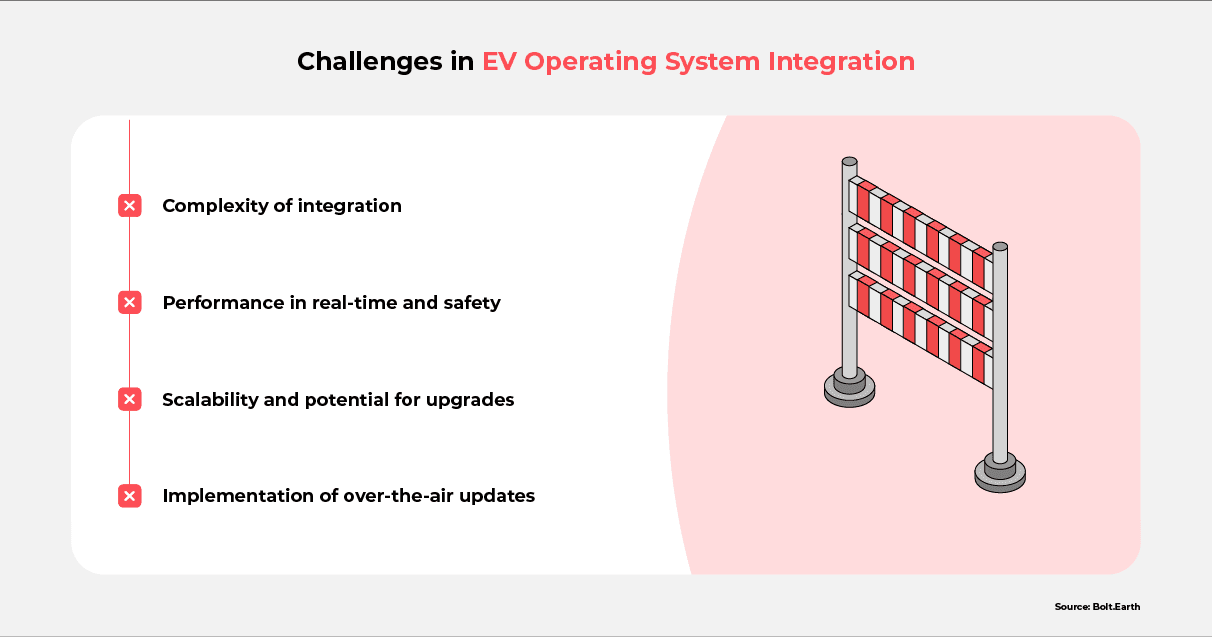
Integration Complexity
Integrating various cutting-edge technologies is a challenge in itself. Many hardware components, such as motor and battery systems, are manufactured by different companies and may have differing communication protocols. Similarly, the OS, which acts as the controller, may have incompatibilities with other software systems, including battery management, GPS, and user interface. The challenge lies in enabling these diverse hardware and software components to communicate and work together.
A viable approach to achieving compatibility and interoperability is through standardized protocols. Although components may have different origins and functions, integration will be easy if they communicate using the same language. Such standardized interfaces and protocols can streamline integration processes.
Real-Time Performance and Safety
Real-time insights into performance and safety are crucial as they can warn drivers if they deviate from lanes or exceed the speed limit. Furthermore, this real-time information is fundamental to autonomous driving and Advanced Driver Assisted Systems (ADAS), as data from external sensors must be analyzed and actions made almost instantaneously. Ensuring such rapid responsiveness is a technical challenge.
The key to addressing this challenge lies in a robust OS and standardization of how the OS communicates with EV subsystems. This simplifies the exchange of critical data from sensors to the vehicle’s central controller. To achieve this safety, EV automakers need a dynamic OS that can understand real-world contexts, detect anomalies, and initiate fail-safe protocols even during unforeseen road events.
Scalability and Upgradability
Scalability and upgradability are the other significant key challenges in OS integration. To keep pace with innovation, the OS must accommodate new hardware and software without disrupting the existing operations. This seamless integration necessitates an OS that can scale easily to leverage emerging technologies.
To address this challenge, it’s essential to anticipate the likely technological innovations over the next decade and develop an OS that can dynamically accommodate them. A good way to stay informed of upcoming technological trends is to read thought-leadership blogs, examine research papers, and analyze utilization and marketing data related to EVs. Adopting a modular approach to OS architecture can make it scalable, as new components can be integrated as needed.
Over-the-Air Updates
Over-the-air (OTA) updates are an integral part of the next generation of SDVs. These updates enable manufacturers to introduce new features and fix existing problems without requiring a complete overhaul. While OTA updates are convenient, they also present new challenges, particularly in cybersecurity, as cybercriminals can easily intercept these updates and add malicious code and risks for data corruption due to poor Internet connectivity. Incompatibility with existing systems, interference with other vehicle systems, and excessive reliance on networks are other potential drawbacks of OTA updates.
While these challenges are daunting, they aren’t impossible to overcome. However, overcoming these obstacles requires a revolutionary approach.
Revolutionary Approaches to OS Integration in EVs
The road to a better driving experience requires a revolutionary approach that reimagines the role of the OS as a dynamic entity, evolving and integrating with other vehicle components to leverage emerging technologies. Along with dynamic OS integration, the use of artificial intelligence (AI) and machine learning (ML) can infuse intelligence into real-time decision-making, optimize energy usage, predict maintenance needs, and personalize driving experiences.
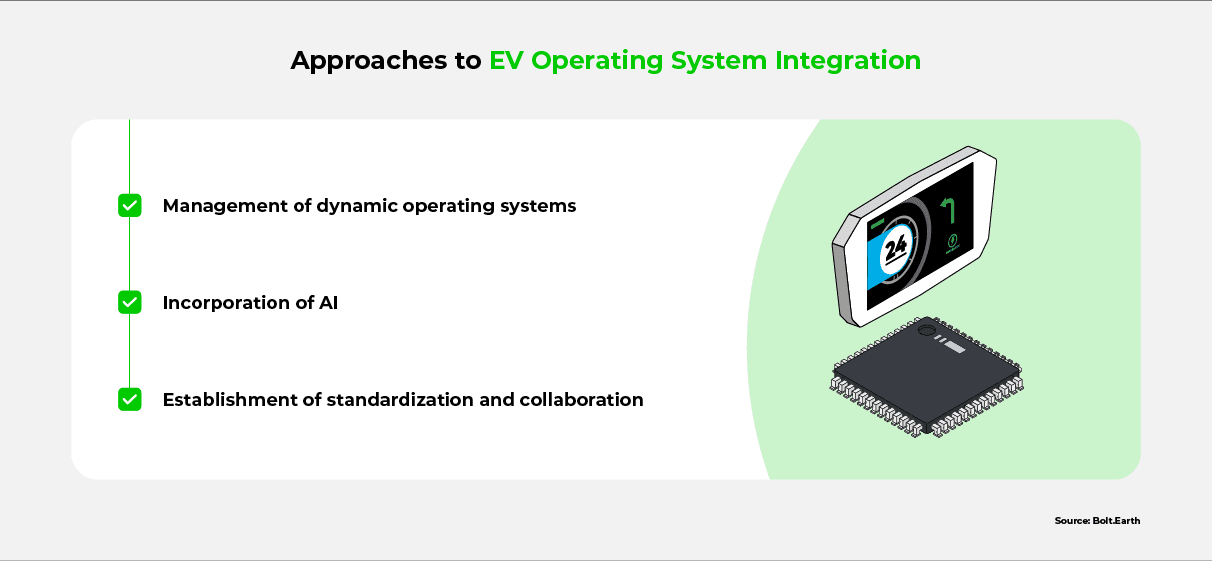
Dynamic OS
The EV OS must seamlessly adapt to new hardware configurations, software updates, and user needs. This evolutionary nature ensures that rigid hardware and software limitations do not confine EVs but can capitalize on upcoming technologies and benefit users.
Dynamic OS enhances energy efficiency by distributing and using energy based on real-time demands, simplifies the addition of new features without a complete system overall, and elevates personalization to new heights, all of which can expand EV adoption.
AI Integration
AI is more than just a technology; it represents a paradigm shift that infuses intelligence into every aspect of EV operation. AI and ML algorithms can analyze extensive datasets from sensors, traffic patterns, and historical behavior to make split-second decisions that optimize energy management and enable autonomous driving.
Moreover, integrating AI into EVs can enhance vehicle-to-infrastructure (V2I) communication. This system enables EVs to interact with traffic lights to mitigate congestion and communicate with grid systems to augment the efficiency of energy usage and consumption. These trends can contribute to creating sustainable, livable, and smart cities.
Standardization and Collaboration
Realizing the benefits of dynamic integration and AI and ML implementation necessitates industry-wide standardization and collaboration. Numerous organizations in the EV ecosystem are working to improve hardware and software capabilities. Synchronizing their efforts and translating their innovation to EV users will require standards. Organizations, including the American National Standards Institute (ANSI), the International Energy Agency’s (IEA) Electric Vehicles Initiative, the International Organization for Standardization (ISO), and governments from countries such as the US, India, and Europe, are collaborating to establish common standards.
While these efforts are encouraging, more work is needed to unite manufacturers, developers, and other stakeholders to define and shape these standards collectively. This collaborative spirit can fuel innovation, reduce costs, and accelerate EV adoption.
Preparing for dynamic OS integration in next-generation EVs is a critical step toward realizing these benefits.
Dynamic OS Integration in Next-Generation EVs
Dynamic OS integration can significantly impact the landscape of next-generation mobility by enabling EVs to adapt to users’ driving habits and optimize energy usage accordingly. This level of personalization, with intelligent adjustment of vehicle parameters, can elevate the user experience and pave the way for autonomous driving.
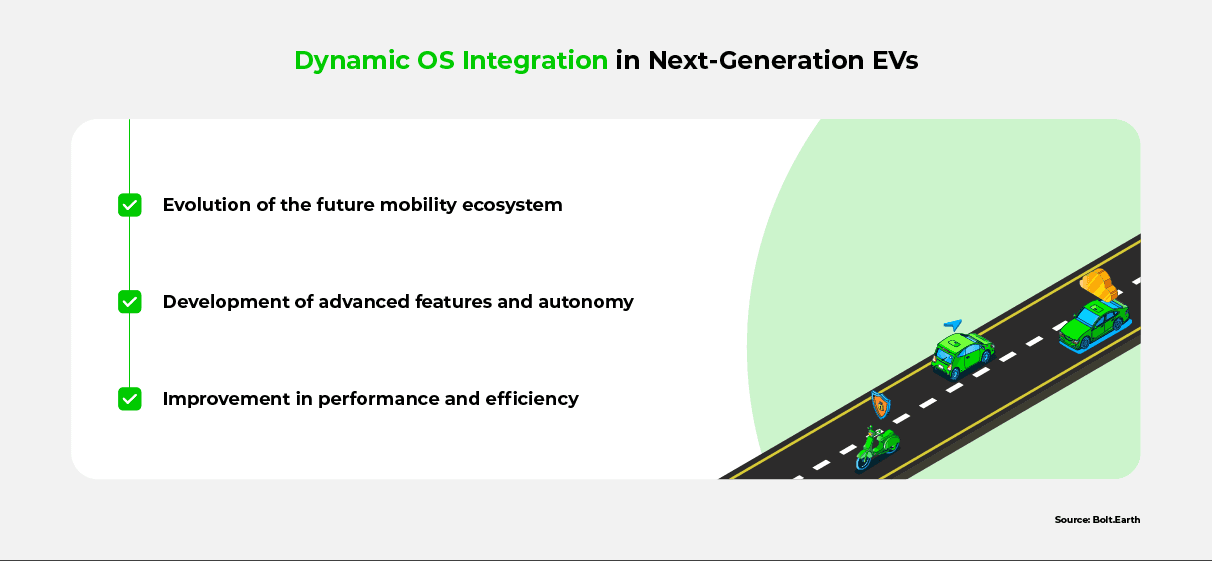
Future Mobility Ecosystem
The impact of dynamic OS integration extends beyond individual EVs, as it can transform the future mobility ecosystem, ushering in an era where EVs are a cohesive component of connected and intelligent transportation infrastructure, with seamless data flow across traffic lights, EVs, and control systems. EVs are pivotal to an energy-efficient future, as they can interact with grids, store and discharge excess energy, and incorporate renewable energy systems.
Advanced Features and Autonomy
Dynamic OS can power advanced features in next-generation EVs, such as intelligent cabins tailored to drivers’ needs and cutting-edge safety features, changing the current perception of EVs. These systems communicate with other vehicles and road sensors to make autonomous driving a reality. Adaptive cruise control and ADAS can further boost the driving experience, making EVs a safe and convenient transportation choice of the future.
Enhanced Performance and Efficiency
Dynamic EV operating systems communicate with the power grid to balance the load and charge efficiently based on the driving needs. This optimizes power distribution and energy management, creating a positive environmental ripple effect. Additionally, efficient power distribution enables the OS to direct power where needed, increasing range, improving acceleration, and reducing charging times. All these advancements accelerate the transition to electric mobility.
These benefits can integrate EVs into a connected transportation and energy system, creating an era where mobility is a dynamic, efficient, and harmonious experience.
Embracing Dynamic Operating System Integration
Dynamic OS integration equips EVs with the intelligence to transform mobility while conserving the environment through efficient charging practices. It can seamlessly incorporate upcoming technologies while overcoming scalability and real-time responsiveness challenges. The emerging trends and innovation in the EV landscape make dynamic OS integration a real possibility in the coming years. However, it necessitates a collaborative effort from all stakeholders in the EV ecosystem to define standards and protocols.
The future is shaped by those who embrace challenges. Let’s unite to seize this opportunity and navigate towards a sustainable and electrifying future with dynamic OS integration.
For more information about dynamic operating system integration in EVs, please see the FAQ and Resources below!
FAQ
How can operating system integration enhance EV performance?
Operating system integration streamlines communication and coordination of various hardware components while the integrated OS optimizes energy distribution, enhances real-time responsiveness, and enables intelligent features. This harmonious collaboration between hardware and software translates to increased range, improved acceleration, and an enhanced driving experience, ultimately enhancing EVs’ overall efficiency and performance.
How does dynamic operating system integration contribute to developing advanced features in EVs?
Dynamic operating system integration embraces new developments with over-the-air updates, allowing automakers to add new functionalities without a system overhaul and boost the efficient utilization of hardware resources. Due to these conducive aspects, dynamic OS integration accelerates developing and deploying advanced features in EVs.
What role does AI play in enhancing operating system capabilities for next-generation EVs?
AI allows the EV operating system to gather and analyze vast datasets from sensors and surroundings, enabling energy optimization, maintenance prediction, and support for autonomous driving in the future. These insights help boost EV performance, safety, and user experience.
How does dynamic operating system integration contribute to the future of mobility?
Dynamic operating system integration enables EVs to seamlessly interact with smart grids, renewable energy sources, and intelligent transportation systems. Adapting to evolving requirements and integrating with larger infrastructures promotes energy efficiency, supports grid stability through bi-directional energy flow, and contributes to a more connected, sustainable, and efficient transportation ecosystem.
What benefits can consumers expect from integrating dynamic operating systems in next-generation EVs?
Consumers can anticipate many benefits from integrating dynamic operating systems, including improved energy efficiency, personalized driving experiences, and enhanced vehicle performance. EVs can adapt to changing conditions and driver preferences and manage energy utilization. This integration maximizes range and minimizes energy waste while seamlessly integrating advanced features.
Resources
Investment Monitor: Software is now driving the EV charging market
Learn about the role of software in advancing the EV charging market.
Appinventiv: How EV Technology and Software are Tackling Key Barriers to Electric Vehicle Adoption?
Discover how software is the key to the future of EV adoption.
Energy Informatics: Integration of EVs into the smart grid: A systematic literature review
Explore how the integration of EVs and smart grid technology works.
Research and Markets: Automotive Operating System Global Market Report 2023
Know how 2023 is shaping up for the EV OS market.
Frost & Sullivan: Implications of GM’s Decision to Embrace a Built-in, Native Operating System
Understand the rationale behind GM’s decision to build an OS for its EVs.



